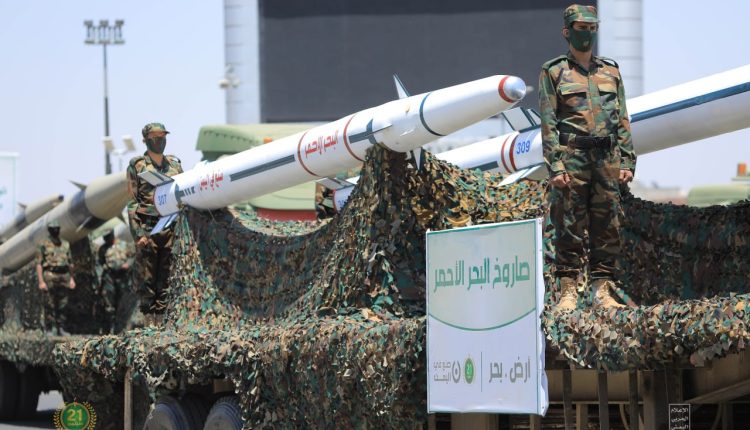Yemeni Military Manufacturing: The Miracle of the September 21 Revolution
The shape of military manufacturing in Yemen after the September 21, 2014 Revolution marked a historic turning point and a strategic shift—not only in the confrontation with the aggression coalition but in Yemen’s modern history as a whole.
Under an all-out siege and a campaign aimed at destroying the state’s structures, a resilient Yemeni will emerged from the crucible of suffering to build an advanced military industrial base—what many have called a “miracle.”
This report reviews how Yemen transformed from a country that relied on imported arms into a producer and exporter of advanced military technologies.
Yemeni Press | Majid Muhammad
Historical context and objective conditions
Before the September 21 Revolution, Yemen’s military institution suffered near-total dependency on foreign actors—especially Saudi Arabia and the United States. Sovereign decisions on armament and development were subject to external will, which systematically weakened the army and dismantled its defensive systems.
The revolution ended that dependency, but it was met with comprehensive aggression and blockade intended to destroy what remained of Yemen’s military capabilities. On April 21, 2015, the Saudi-Emirati-American coalition declared the destruction of 90% of Yemen’s ballistic missiles—asserting that Yemen’s missile capability had been neutralized. That declaration in fact marked the real starting point of Yemen’s military-industrial journey.
From rehabilitation to full manufacturing
Efforts began modestly: Yemeni engineers and experts rehabilitated and upgraded what remained of out-of-service weapons (mostly Soviet-made). That effort quickly evolved into full-scale manufacturing based on the principle of “turning challenge into opportunity.” Deep in the mountains and in fortified caverns, secret military industrial complexes were established, staffed by thousands of Yemeni engineers and specialists who developed and produced integrated weapon systems.
Major manufacturing achievements
Yemen’s military industries made qualitative leaps across several fields, notably:
Ballistic and cruise missiles: Development and production of a comprehensive family of missiles (for example: Quds, Burkan, Zulfiqar, Saʿir), noted for improved accuracy and the ability to evade hostile defense systems. These missiles have struck strategic targets deep inside adversary territory, achieving a new “deterrent balance.”
Unmanned aerial vehicles (drones): Yemen emerged as a regional power in drones, progressing from simple reconnaissance models (e.g., Hudhud, Rasid) to long-range strike platforms (e.g., Samad, Waʿid) capable of conducting precise operations deep in enemy territory.
Air defenses: Development of air-defense systems (e.g., Fater, Thaqib) that significantly degraded coalition air operations and downed modern aircraft, altering the dynamics of aerial warfare.
Naval capabilities: Production of combat boats and naval mines (e.g., Asif, Tofan, Karrar) that posed real threats to enemy warships and vessels in the Red Sea, demonstrating Yemen’s capacity to defend its coasts and territorial waters.
Why it is called a “miracle”
Describing Yemen’s military manufacturing as a miracle is grounded in observable facts:
Achievement under siege: All this progress occurred despite a suffocating blockade that restricted even the most basic materials—evidence that Yemeni will and expertise can accomplish the seemingly impossible.
Reliance on national talent: The achievement constituted a scientific and technical revolution driven by Yemeni national competencies—an investment in human capital.
Changing the balance of conflict: Beyond technical success, domestic manufacturing was decisive in shifting the balance of power, imposing new deterrence equations and forcing the enemy to recalculate.
Conclusion
Military manufacturing stands as one of the most significant achievements of the glorious September 21 Revolution. It is a story of resilience and ingenuity: a people who decided to own their fate, defend their sovereignty and dignity, and build capabilities rather than remain dependent. This unique experience offers an inspiring model for peoples seeking liberation from domination and dependency, proving that national will, when combined with knowledge and faith, can indeed produce miracles.

